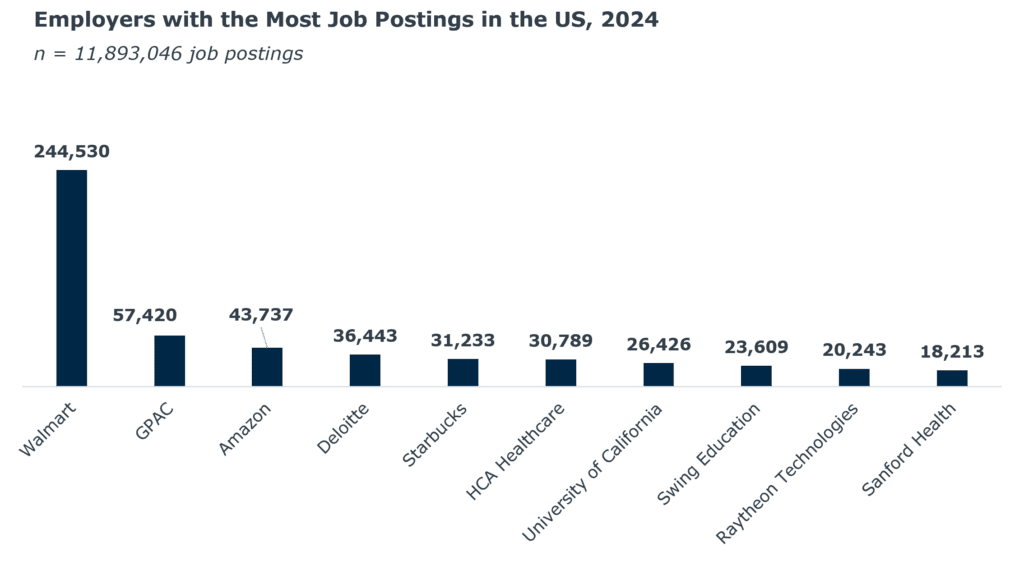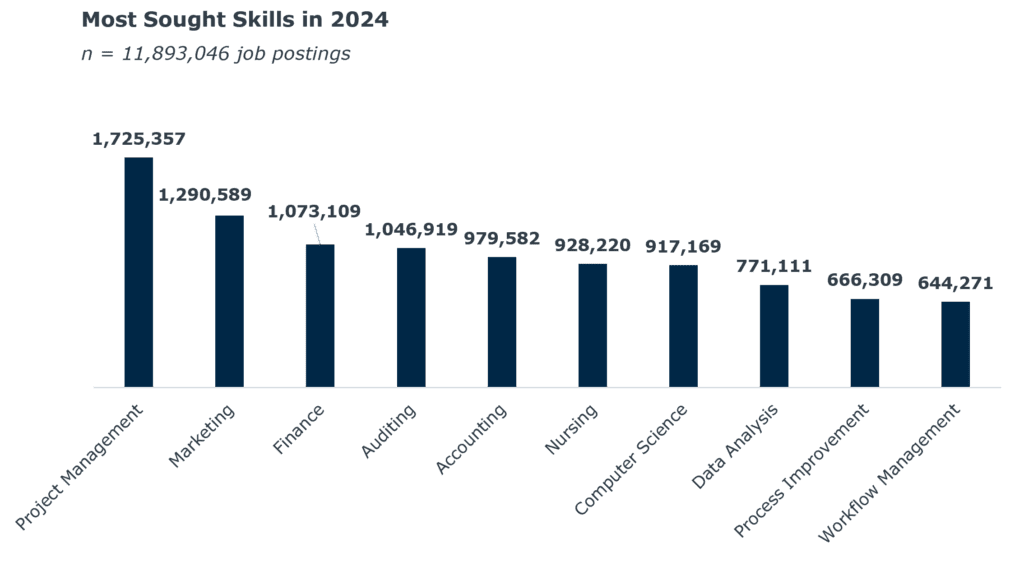How to use state demand data to launch or revitalize programs
Plus, access employer demand data for your state
January 28, 2025
By: Lizzie Brennan
When designing new academic programs, faculty and institutional leaders often fall back on the familiar: develop a specialization in my research area, add a prestigious terminal degree in our field, and see what our peers have been developing. In conversations to improve existing programs, the path is similar—or concludes that, if just given additional resources, a program could be more successful. These stagnant approaches can lead to developing programs that are misaligned with student needs and market demand.
Each year, our Professional & Adult Education Forum analyzes statewide employer demand data. This informs state demand profiles with the top requested skills, employers with greatest demand, and most frequently posted occupations for each state. Beyond the data, the state demand profiles offer discussion questions and guidance for how to use the data and insight into select data points where numbers alone do not tell the whole story.
Read on for three ways to leverage employer demand data in program decision-making—and don’t forget to check out the demand profile for your state.
1. Leverage labor intelligence to identify and motivate employer partners
Labor market intel allows universities to approach prospective employer partners with a more granular understanding of potential training and educational needs. Employer partners can offer:
- Insight into nuanced needs via program advisory boards
- Access to high-potential audiences in need of education
- Opportunities for current students’ experiential learning and alumni employment

2. Reposition and scale existing programs
Refreshing existing programs can help maximize investments already made in programs with the potential to grow. For example, ensure your programs are conferring the skills employers seek most, like project management. While project management skills are often requested in directly aligned occupations such as Project Management Specialists, these skills are increasingly requested within other occupations such as Software Developers, Construction Managers, and Medical and Health Services Managers. Common job titles seeking project management skills include Business Analysts, Construction Project Managers, IT Project Managers, and Engineers.

To improve your programs, consider adding project management courses or concentrations into programs. Below are concentration/certificate ideas based on degree topic:
- STEM: IT Project Management, Biotechnology Project Management, Health Care Project Management, Engineering Project Management
- Business: Marketing Management, MBA with a Project Management Concentration, Non-Profit Management, Project Management for Finance Professionals
- Liberal Arts: Arts Management, Event and Production Management, Media Production and Project Management
3. Generate new program ideas aligned to students’ motivations and employers’ needs
Employer demand can also ignite ideas for new offerings. Once discussions have identified gaps between employers’ needs and available offerings, explore what programming could teach those valuable skills and prepare students to enter those hot jobs.

A closer look at job postings from Amazon:
- Amazon is among the top national employers.
- Top skills Amazon requested in 2024 from bachelor’s- and master’s-level professionals nationwide included project management, process improvement, automation, and programming languages such as SQL.
- Leverage this data for academic programming planning to identify gaps between employer’s needs and available offerings. Ask questions like:
- Which programming could incorporate these skills to better prepare students for workforce demands?
- Amazon example: Does our MBA, M.S. in Computer Science, and M.S. in Software Engineering clearly and confidently confer these skills? Do our Marketing, Finance, and liberal arts programs teach the less technical and relevant top skills like project management, process improvement, and business operations?
- What new credentials could we offer to stay current with the market?
- Amazon: Could we offer certificates, concentrations, or micro-credentials in areas like project management, supply chain, or automation?
- Which programming could incorporate these skills to better prepare students for workforce demands?
By using data, leaders of graduate, online, professional, and other adult-serving programs can spark more productive discussions and ultimately achieve more successful launches and robust portfolio development.
More Blogs

What it takes to win in grad and adult enrollment today

Our new staffing model playbook for higher ed CMOs
